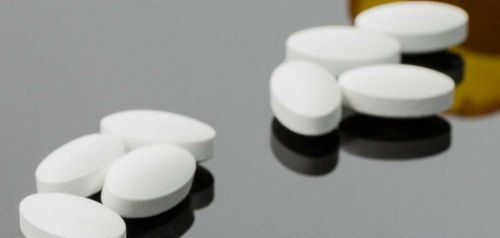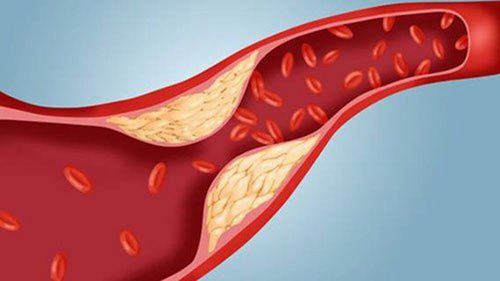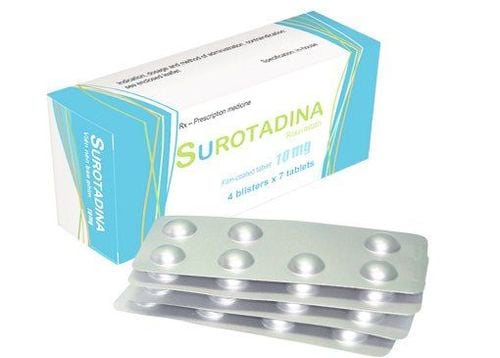This is an automatically translated article.
The article was professionally consulted with Senior Doctor, Specialist II Doan Du Dat - General Internal Medicine - Department of Medical Examination & Internal Medicine - Vinmec Ha Long International Hospital.Cholesterol is a component present in most body parts and plays an essential role in human development. However, if the level of LDL cholesterol is too high, there is a risk of cardiovascular disease. To overcome this condition, patients need to use drugs to treat high total cholesterol.
When it comes to blood lipids, in clinical practice, we often refer to 4 main components:
Total cholesterol Triglyceride HDL - ch (High Density cholesterol), also known as "good fat" LDL -ch (Low Density Cholesterol) , also known as "bad fat"
When it comes to blood lipids, in clinical practice, we often refer to 4 main components:
Total cholesterol Triglyceride HDL - ch (High Density cholesterol), also known as "good fat" LDL -ch (Low Density Cholesterol) , also known as "bad fat"
1. Treatment of total cholesterol with drugs
Treatment for total cholesterol usually consists of two main ways: increasing HDL cholesterol levels and lowering LDL cholesterol levels. If increasing good cholesterol levels focuses on creating beneficial "health habits" for patients such as exercising to lose weight, stopping smoking and drinking alcohol, etc., reducing bad cholesterol levels will direct patients to the use of drugs to prevent the risk of cardiovascular diseases.Generally, all patients who are advised to be treated with drugs to fight high LDL cholesterol are also at increased risk for coronary heart disease. When prescribing cholesterol-lowering drugs and establishing treatment goals, clinicians need to select the appropriate drug based on its safety, effectiveness, cost, and effect on plasma concentrations. lipids.
Triglycerides are another form of fat found in the blood and in food. Elevated blood triglycerides are often accompanied by increased total cholesterol, including increased LDL (bad) and decreased HDL (good).
Cholesterol circulates in the blood, but cannot move in the blood by itself. Therefore, to circulate in the blood, cholesterol must combine with a protein (also known as Apoprotein) to form Lipoprotein. Lipoprotein has an inner core consisting of cholesterol and Triglyceride
2. Medicines to treat high total cholesterol
2.1. Niacin (nicotinic acid) Niacin is one of the currently widely recommended anti-hypercholesterolemic drugs. This is the first lipid-lowering drug associated with a reduction in total cholesterol. Niacin reduces the production of VLDL (liver very low density lipoprotein) particles, secondary to a decrease in LDL levels, halves triglycerides, increases HDL cholesterol levels, and lowers lipoprotein levels. As a result, the effect of Niacin on blood lipids is almost optimal. However, when using Niacin, attention should be paid to prostaglandin-mediated flushing. This flushing can be controlled by pre-treatment with aspirin (81-325mg/day) or non-steroidal anti-inflammatory drugs.Need to use Niacin exactly as indicated:
Initial daily dose is 100mg once The maximum daily dose is 3 - 4.5g divided.
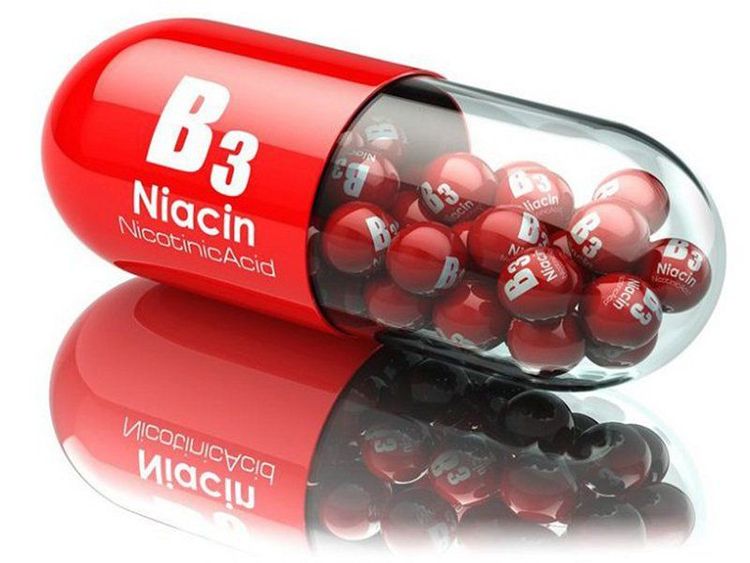
Niacin là một trong những thuốc điều trị tăng cholesterol máu được khuyên dùng rộng rãi
To use these drugs properly, it is necessary to adhere to the prescribed dosage:
Lovastatin : Initial daily dose is 10mg once, then gradually increase to a maximum of 80mg divided into daily Pravastatin: Initial daily dose is 20mg once and increased to a maximum of 40mg once Simvastatin : Initial daily dose is 5mg once and maximum daily dose is 40mg once Fluvastatin : Initial daily dose is 20mg once and the maximum daily dose is 40mg once Patients should take the drug once daily and in the evening because cholesterol synthesis usually takes place at night. While taking the drug, patients may experience side effects such as myositis, the incidence may be higher in people taking concomitant fibrates or niacin.
2.3. Fibric acid derivatives (gemfibrozil, clofibrat), of the fibrate class In the Helsink cardiovascular study, gemfibrozil was shown to reduce the incidence of coronary heart disease in middle-aged men with hypercholesterolemia. but did not have coronary artery disease. However, effects from gemfibrozil have only been observed in patients who also have low HDL cholesterol and high triglyceride levels. As for clofibrate, very few doctors recommend it.
To use gemfibrozil properly, it is necessary to adhere to the prescribed dosage:
Initial daily dose is 600mg once The maximum daily dose is 1200hg divided.
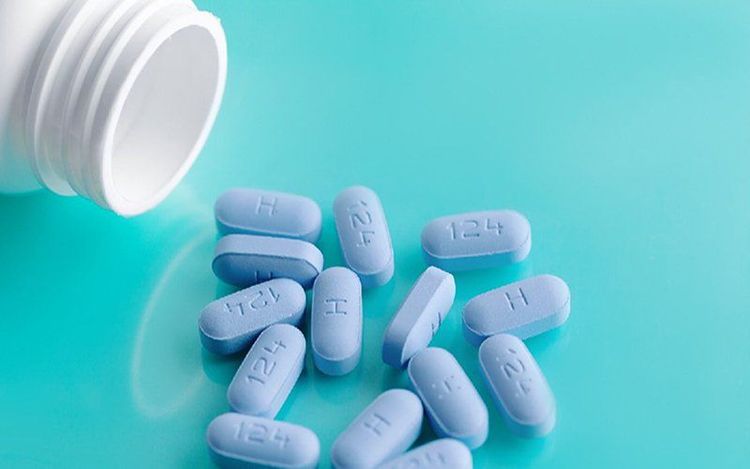
Người dùng Gemfibrozil cần tuân thủ đúng liều lượng được chỉ định
To use these drugs properly, it is necessary to adhere to the prescribed dosage:
Cholestyramine: The initial daily dose is 4mg once and the maximum daily dose is 24mg divided. Colestipol: Initial daily dose is 20mg once and maximum daily dose is 30mg divided. 2.5. Probucol Probucol treatment will result in a marked reduction in LDL cholesterol, specifically by 10-15% of cholesterol levels. However, probucol also worries experts because the drug also causes HDL cholesterol levels to decrease by nearly 10%. Although Probucol has some efficacy in the treatment of total cholesterol, the mechanism of action of this drug has not been clearly established. Therefore, probucol is often indicated for people with genetic disorders and when other treatments have failed.
- Probucol is a strong antioxidant, so it has a strong anti-atherosclerotic effect in experimental animals. When using the drug may experience some undesirable effects: diarrhea, abdominal bloating, abdominal pain, nausea. Do not use the drug in patients with recent myocardial infarction, prolonged QT interval, pregnant women, nursing mothers, children under 18 years of age, taking antiarrhythmic drugs of class I, III, antiarrhythmic drugs. depression
2.6. Atorvastatin Atorvastatin belongs to the group of statin drugs, which are responsible for lowering blood cholesterol levels through the mechanism of HMG CoA reductase in the cholesterol metabolism pathway in the liver. Unlike other cholesterol medications, atorvastatin not only lowers LDL cholesterol levels, but also helps lower blood triglyceride levels. High blood triglyceride levels are also associated with coronary heart disease.
Among medicines containing the active ingredient Atorvastatin such as LIPVAR 20 ; lipitor, atovas, atorvastatin + ezetimibe, Atorvastatin RVN, Atorvastatin Savi, ..... In order to effectively treat hypercholesterolemia, patients need to be examined and need to adhere to the correct use and dosage prescribed by the doctor.
Using drugs to treat total cholesterol will help patients significantly reduce the risk of cardiovascular diseases. In addition to drug treatment, patients should also create healthy eating habits and regular physical activity to limit hypercholesterolemia.
Please dial HOTLINE for more information or register for an appointment HERE. Download MyVinmec app to make appointments faster and to manage your bookings easily.




